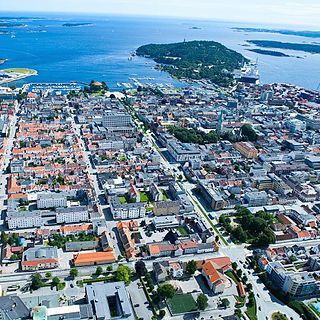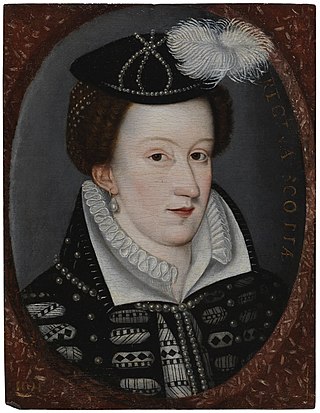Related Research Articles

Maria Feodorovna, known before her marriage as Princess Dagmar of Denmark, was Empress of Russia from 1881 to 1894 as the wife of Emperor Alexander III. She was the second daughter of Christian IX of Denmark and Louise of Hesse-Kassel. Maria's eldest son became the last Russian monarch, Emperor Nicholas II. Maria lived for 10 years after Bolshevik functionaries executed Nicholas and his immediate family in 1918.

Vikings is the modern name given to seafaring people originally from Scandinavia, who from the late 8th to the late 11th centuries raided, pirated, traded and settled throughout parts of Europe. They also voyaged as far as the Mediterranean, North Africa, Volga Bulgaria, the Middle East, and North America. In their countries of origin, and some of the countries they raided and settled in, this period is popularly known as the Viking Age, and the term "Viking" also commonly includes the inhabitants of the Scandinavian homelands as a collective whole. The Vikings had a profound impact on the early medieval history of Scandinavia, the British Isles, France, Estonia, and Kievan Rus'.
The 1520s decade ran from January 1, 1520, to December 31, 1529.
The 1060s was a decade of the Julian Calendar which began on January 1, 1060, and ended on December 31, 1069.
The 1130s was a decade of the Julian Calendar which began on January 1, 1130, and ended on December 31, 1139.

The swastika is an ancient religious and cultural symbol, predominantly in various Eurasian, as well as some African and American cultures, now also widely recognized for its appropriation by the Nazi Party and by neo-Nazis. It continues to be used as a symbol of divinity and spirituality in Indian religions, including Hinduism, Buddhism, and Jainism. It generally takes the form of a cross, the arms of which are of equal length and perpendicular to the adjacent arms, each bent midway at a right angle.

Kristiansand is a seaside resort city and municipality in Agder county, Norway. The city is the fifth-largest and the municipality the sixth-largest in Norway, with a population of around 112,000 as of January 2020, following the incorporation of the municipalities of Søgne and Songdalen into the greater Kristiansand municipality. In addition to the city itself, Statistics Norway counts four other densely populated areas in the municipality: Skålevik in Flekkerøy with a population of 3,526 in the Vågsbygd borough, Strai with a population of 1,636 in the Grim borough, Justvik with a population of 1,803 in the Lund borough, and Tveit with a population of 1,396 in the Oddernes borough. Kristiansand is divided into five boroughs: Grim, which is located northwest in Kristiansand with a population of 15,000; Kvadraturen, which is the centre and downtown Kristiansand with a population of 5,200; Lund, the second largest borough; Søgne, with a population of around 12,000 and incorporated into the municipality of Kristiansand as of January 2020; Oddernes, a borough located in the west; and Vågsbygd, the largest borough with a population of 36,000, located in the southwest.

A war poet is a poet who participates in a war and writes about their experiences, or a non-combatant who writes poems about war. While the term is applied especially to those who served during the First World War, the term can be applied to a poet of any nationality writing about any war, including Homer's Iliad, from around the 8th century BC as well as poetry of the American Civil War, the Spanish Civil War, the Crimean War and other wars.

The purpose of this timeline is to give a detailed account of Christianity from the beginning of the current era (AD) to the present. Question marks ('?') on dates indicate approximate dates.
Aristocracy of Norway refers to modern and medieval aristocracy in Norway. Additionally, there have been economical, political, and military elites that—relating to the main lines of Norway's history—are generally accepted as nominal predecessors of the aforementioned. Since the 16th century, modern aristocracy is known as nobility.

Martin Luther was a German priest, theologian, author, hymnwriter, professor, and Augustinian friar. He was the seminal figure of the Protestant Reformation, and his theological beliefs form the basis of Lutheranism.
Bayerischer Fernsehpreis is an award presented by the government of Bavaria, Germany since 1989. The prize symbol is the "Blue Panther", a figure from the Nymphenburg Porcelain Manufactory. The prize money is €10,000.

Esbjerg is a seaport town and seat of Esbjerg Municipality on the west coast of the Jutland peninsula in southwest Denmark. By road, it is 71 kilometres (44 mi) west of Kolding and 164 kilometres (102 mi) southwest of Aarhus. With an urban population of 71,698 it is the fifth-largest city in Denmark, and the largest in West Jutland.

The following events occurred in April 1914:

The jewels of Mary, Queen of Scots (1542–1587), are mainly known through the evidence of inventories held by the National Records of Scotland. She was bought jewels during her childhood in France, adding to those she inherited. She gave gifts of jewels to her friends and to reward diplomats. When she abdicated and went to England many of the jewels she left behind in Scotland were sold or pledged for loans, first by her enemies and later by her allies. Mary continued to buy new jewels, some from France, and use them to reward her supporters. In Scotland her remaining jewels were worn by her son James VI and his favourites.
Historical sources of the Crusades: pilgrimages and exploration include those authors whose work describes pilgrimages to the Holy Land and other explorations to the Middle East and Asia that are relevant to Crusader history. In his seminal article in the Catholic Encyclopedia, Dominican friar and historian Bede Jarrett (1881–1934) wrote on the subject of Pilgrimage and identified that the "Crusades also naturally arose out of the idea of pilgrimages." This was reinforced by the Reverend Florentine Stanislaus Bechtel in his article Itineraria in the same encyclopedia. Pilgrims, missionaries, and other travelers to the Holy Land have documented their experiences through accounts of travel and even guides of sites to visit. Many of these have been recognized by historians, for example, the travels of ibn Jubayr and Marco Polo. Some of the more important travel accounts are listed here. Many of these are also of relevance to the study of historical geography and some can be found in the publications of the Palestine Pilgrims' Text Society (PPTS) and Corpus Scriptorum Eccesiasticorum Latinorum (CSEL), particularly CSEL 39, Itinerarium Hierosolymitana. Much of this information is from the seminal work of 19th-century scholars including Edward Robinson, Titus Tobler and Reinhold Röhricht. Recently, the Independent Crusaders Project has been initiated by the Fordham University Center for Medieval Studies providing a database of Crusaders who traveled to the Holy Land independent of military expeditions.
References
- ↑ Kittredge (1900), noted in Frank Wadleigh Chandler, The Literature of Roguery (1907, vol. I:56ff).
- ↑ note that English rush is of Latinate origin, but was assimilated in usage to MHG rûschen (whence also Modern German Geräusch "noise"; Old English hrýscan) held to be "quite unconnected in origin" by the OED.